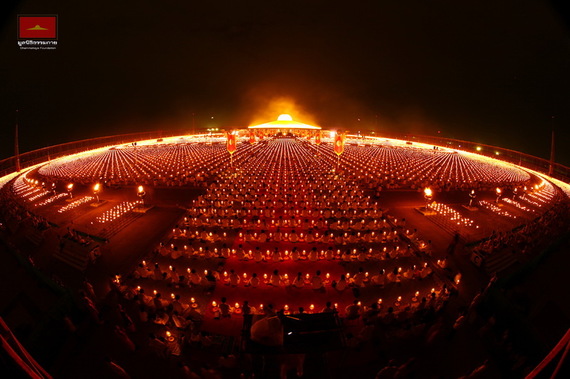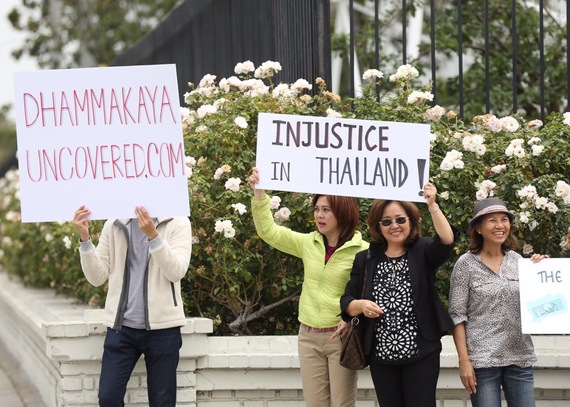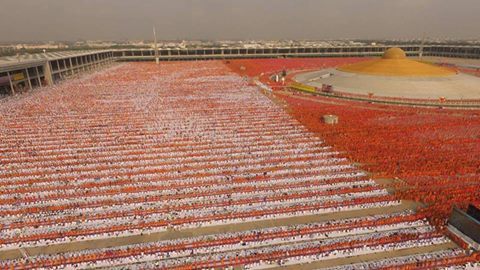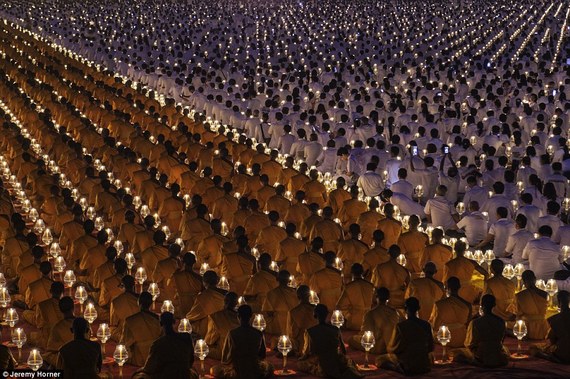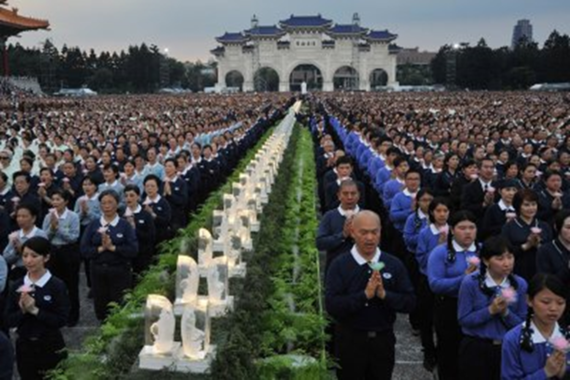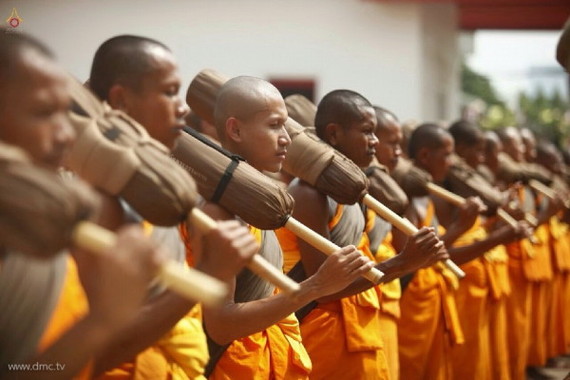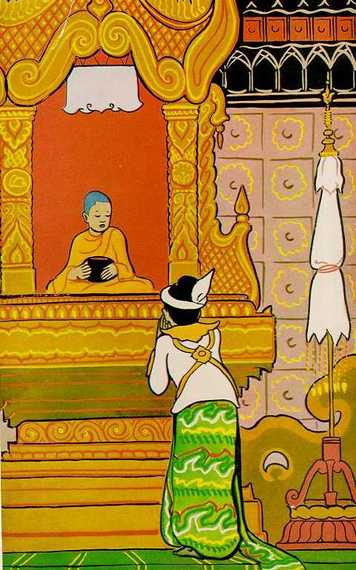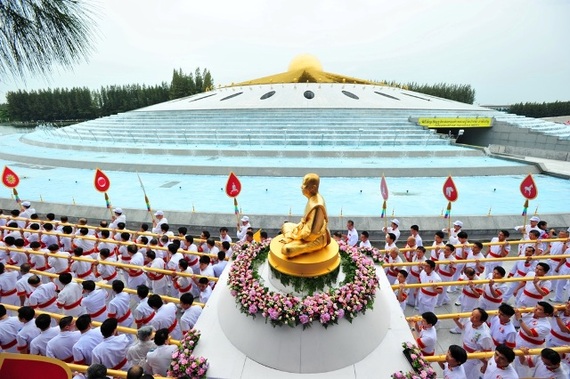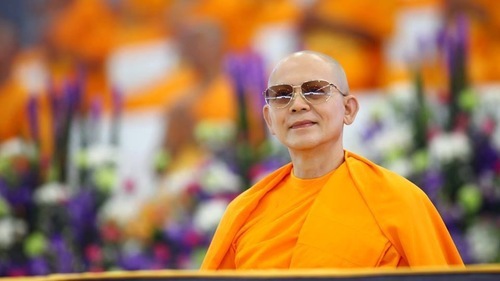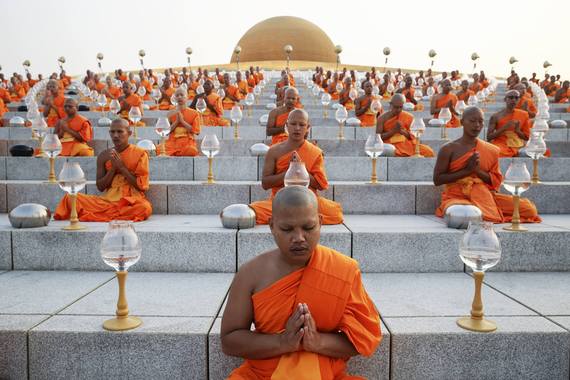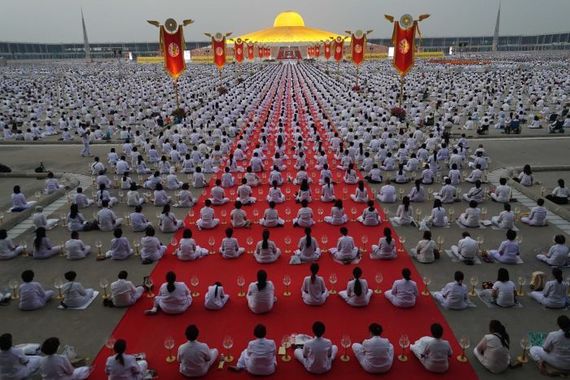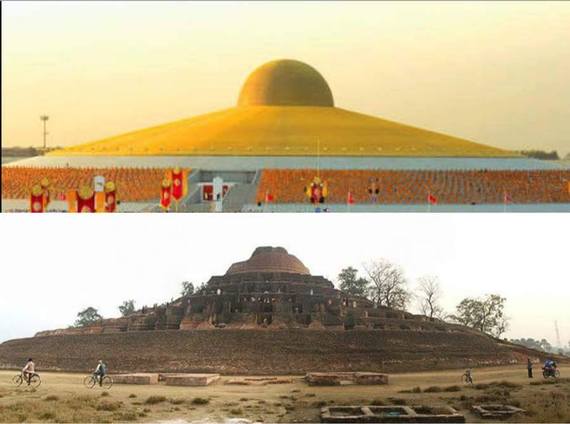Wat Phra Dhammakaya, a colossal 1,000 acre temple in Thailand, is still much of an enigma to most people in the world. Most outsiders who have heard of the temple hardly know anything about it, except that it is massive in size and often associated with controversy. But what exactly makes this temple so controversial in the first place?
Even with the temple's immense size and large following, Dhammakaya has stayed largely under the radar throughout its less than 50 year history. The exceptions being the media scrutiny it faced in 1999 and in 2002 over alleged scandals. The temple was later cleared of these charges and some Thai media outlets even apologized for slander afterwards. Dhammakaya made headlines once again in a heated legal case that started in 2015.
Even without the random turbulence the temple has gone through, it has faced criticism over the years regardless over its unique approach to Buddhism.
Other than the much more common accusation of commercialism, which I addressed in a previous article, Dhammakaya does have a few other controversies surrounding it.
Dhammakaya is unquestionably an organization that the media loves to hate, and tabloids just can't get enough of the scandalous stories about it. The accusations against the temple range from concerns over its size, to bizarre theories about the temple trying to take over the world. One prominent Dhammakaya critic, Dr. Mano Laohavanich, accuses the temple of having ties to the Nazis. A somewhat cliché accusation for a critic to say the least.
I've even heard some Thais accuse the temple of using magic spells (really people?) to bewitch its huge number of followers into attending.
Wacko conspiracy theories aside, Dhammakaya's unique approach to Buddhism has drawn some legitimate criticisms, and mainstream accusations are generally less ridiculous. So what makes the world's largest Buddhist temple so controversial?
Massive Membership
A common criticism of Dhammakaya has to do with its sheer size and massive following. Dhammakaya is famous for its colossal ceremonies featuring attendance in the hundreds of thousands to sometimes over a million people. An impressive feat considering the temple is less than 50 years old and started with just a few thousands followers.
So why is this controversial at all? After all, the temple can't help it if a lot of people wish to attend, and it seems odd to be criticizing something simply for having a lot of followers.
Disregarding conspiracy theories about Dhammakaya trying to take over the world by sitting it into submission, many critics do have legitimate concerns over the temple's size.
A common criticism of the temple's massive ceremonies is that such events promote Buddhism as an organized religion, rather than a way of life, a notion that is especially popular in the West. This is something that is debatable of course, but somebody who clings to that notion could understandably have some disagreements with Dhammakaya. Dhammakaya critic Sulak Sivaraksa makes this very argument against the temple in fact.
Another concern critics have about Dhammakaya's activities is that the massive crowds it draws in siphon people away from local temples. Many Thais prefer the cozy atmosphere of small community temples to a less intimate massive one. In fact, Thailand is currently going through a serious epidemic of temple abandonment, a problem Dhammakaya acknowledges and has made efforts to reverse.
Having to see your community temple become abandoned is no easy sight, so it's reasonable people would blame a mega-temple like Dhammakaya, despite the temple's efforts to stem the tide of temple abandonment with its vigorous support of temples in crisis zones and by encouraging members to support and attend their local temple's events as well as their own.
Orderliness
Dhammakaya is famous in Thailand for its focus on orderliness, and the discipline of Dhammakaya monastics is so renowned many Thais can spot a group of Dhammakaya monks easily due to their unique habit of walking in formation. The temple even asks all attendees to wear white at the temple to represent purity, and of course, to make things look orderly. This aspect of Dhammakaya has sparked criticism of the temple however and even accusations of the temple secretly training communists to take over Thailand in the 1970s.
So what's behind this controversy?
Other than the somewhat laughable theories that the temple is secretly training Communist Nazi's for world domination, there are indeed less absurd reasons for these criticisms.
Unlike other Buddhist traditions, such as the Chinese influenced traditions, Thai monastics actually do not generally put discipline and order at the forefront of monastic practice. Wat Phra Dhammakaya is one of the few temples in Thailand that puts such emphasis on order. For many Thai temples, the focus is more on letting go and convenience to maintain a peaceful mind than upholding themselves to any kind of disciplined code of conduct. Which makes a lot of sense when you consider a big part of Buddhism is being free from worry.
Naturally, since Dhammakaya's customs are different from most Thai temples, this provides ample fuel for controversy. Like with many organizations, particularly religious ones, doing something different than what is seen as mainstream is often seen as "bizarre" or "suspicious".
Some more reasons for this have to do with the notion that such orderliness is "unBuddhist" per se since having strict discipline isn't really seen as being in line with the calm and relaxed stereotypes usually associated with Buddhism. Despite the fact that such order is found in some other Buddhist traditions.
So why does Dhammakaya demand such strict discipline from its monks anyways?
A big reason Dhammakaya does this is to instill or uphold the faith of the laypeople. One famous Buddhist story is the story of Ashoka the Great, a famous Indian Emperor who was vital for the spread of Buddhism. Ashoka the Great became inspired when he saw a Buddhist novice monk named Nigrodha walking on the street, he was heartened by the serene way the monk carried himself and the Emperor invited him to his palace where the young monk delivered a sermon.
Believe it or not, this is a huge reason Dhammakaya has this tradition of orderliness, and it has worked on many occasions. I know of many cases where people become intrigued by the orderliness of monks from Dhammakaya and seek out the temple as a result, some eventually becoming devout followers.
Another reason Dhammakaya has this style of order has to do with its size. Keep in mind most temples in Thailand are a lot smaller and have a fairly modest number of monks and staff to manage. With Wat Phra Dhammakaya's thousands of monks and staff, and a massive temple stretching 1,000 acres, not having a system of discipline and order can make things pretty chaotic.
Reverence for its Leaders
A less common, but still notable criticism of Dhammakaya has to do with the huge devotion it has towards its leaders. These claims are quite accurate. Dhammakaya members undoubtedly have a strong reverence for the leaders that built the foundation for the temple, particularly: the respected Thai meditation master Phramongkolthepmuni, the temple's founder Master Nun Chand Khonnokyoong, and the temple's current abbot Venerable Dhammajayo.
This however, is not at all abnormal in Buddhist culture, and Dhammakaya is far from the only Buddhist organization that holds deep respect for its leaders.
In college, I became exposed to two other large Buddhist organizations; Plum Village, led by Zen Master Thich Naht Hahn, and Tzu Chi, a humanitarianism-based Buddhist organization led by Master Cheng Yen. Both of which I found to have a base of followers extremely devoted to their respective masters.
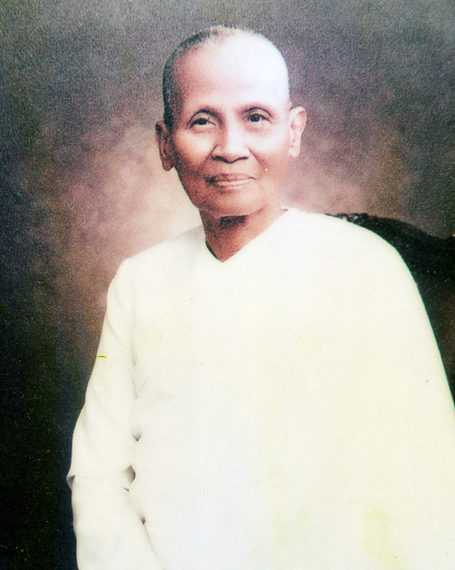
A portrait of the founder of Wat Phra Dhammakaya, Master Nun Chand Khonnokyoong
Image Source: wikipedia
I once went to a small meeting of Thich Naht Hahn followers, consisting largely of Westerners inspired by his books. What I found so striking there was the amount of respect they showed the Zen master, even going as far as placing a picture of him at the center for the meeting, and bowing to him before and after the meeting.
When the master came to visit Deer Park, the San Diego branch of his organization, a crowd of devoted followers from all walks of life packed the temple, forcing the main hall to overflow into the outside.
The same holds for the large Taiwanese Buddhist organization, Tzu Chi. I joined the collegiate branch in college on a friend's invite, and was intrigued to see how much respect the members had for their master. Despite large numbers of non-Buddhist members, the volunteers regularly kicked off their meetings by bowing to Master Cheng-Yen, and her presence also drew in large crowds of devoted followers.
This type of reverence shouldn't be a surprise; respect is a huge part of Buddhism. The Buddha himself was just a human, yet Buddhists of all sects and backgrounds hold deep reverence for the great teacher. So unless these other late Buddhist masters also went to Hogwarts with Venerable Dhammajayo to learn how to bewitch masses of devotees, I think it's pretty safe to say having high regard for one's masters isn't strictly a Dhammakaya thing.
Political Ties
Another common accusation Dhammakaya is dogged by is accusations of political ties to the famous Red Shirt political group in Thailand.
Such accusations make people believe that Dhammakaya is actively political, but even if you scour the temple's 24 hour TV channel you won't find an inkling of political endorsement. While some modern religious groups do officially take sides on politics, Dhammakaya does no such thing in the manner you would see with American preachers like Al Sharpton or Pat Robertson.
After all, the temple's purpose is to attract many followers, something everybody knows it is very good at, and it would be counterproductive to alienate a group of potential followers by picking a side in Thailand's Red Shirt-Yellow Shirt conflict. Plus, neither side really captures the "Nazi Communists" part of the political spectrum critics say Dhammakaya supposedly backs.
Dhammakaya's "association" with the Red Shirts comes largely from the media citing each other as proof of the ties and a few Red Shirt leaders having been Dhammakaya members. However, having members who are politicians is different from being actively political, and that should make Dhammakaya no more affiliated with the Red Shirts than the Catholic Church is affiliated with the American Democratic party because of the membership of US Vice President Joe Biden, or affiliated with the American Republican Party because of US House Speaker Paul Ryan. Although they are on opposite sides of the political spectrum, they both belong to the same church.
Dhammakaya is made up of people from all backgrounds and opinions. The last thing anyone would expect a temple to do is ask what political affiliation somebody is before entering the temple. In fact, many prominent supporters of Dhammakaya are actually known to be staunch Yellow Shirts. Prakob Chirakiti, a big-time supporter of Dhammakaya, is a known member of the Thailand's Yellow Shirt Party (Democrat Party). As one Dhammakaya blogger put it:
"...some of them may be Yellow shirts, some Red shirts, some undecided; it is each person's freedom. Whatever political groups they identify with, when they are inside the temple's premises, they are White shirts."
To Conclude
While the aforementioned points and the "commercialism" are probably the most prevalent criticisms of Dhammakaya, there are others that plague the temple.
One minor criticism is the so called "unusual" shape of its iconic Stupa. This does have a clear explanation however and doesn't warrant elaboration in this article.
Another one is the simplistic design of the temple. While some find the practical and simple design of Dhammakaya quaint and calming, others find it cold and emotionless compared to the majestic beauty of traditional Thai temples. This of course is simply a matter of architectural preference.
Controversial or not, Dhammakaya is undoubtedly a very unique temple. Some say the temple's approach to the Dhamma is heresy, others say it is simply a modern approach to Thai Buddhism.
While supporters and opponents alike will almost unanimously agree that Dhammakaya does do things differently from most Thai temples, Dhammakaya does have reasons for them, and they certainly aren't due to secret plans to take over the world or to wage war against muggles.
Either way, you can only learn so much from reading things in the juicy "news" exposés you see in the media. Especially since a lot of news reporters spend no more than a few days at Dhammakaya "investigating" their story before writing their so called tell-all reports.
Much like how the best way to understand the Buddha's Dhamma is to experience it through personal practice rather than academic study, the best way to get an understanding of Dhammakaya is to explore it for yourself; first hand. Nothing you can read or hear from random people online will give you a more accurate understanding of the mysterious temple; not online forums, not gossip, not this article or any other article.
Some come to Wat Phra Dhammakaya out of curiosity and become lifelong members, others come and find that Dhammakaya just isn't for them. It is all based on personal preference.
Exploring Wat Phra Dhammakaya for yourself may not guarantee that you'll like it; maybe you will, maybe you won't. But at the very least, it'll quell any suspicions that Dhammakaya is secretly training communists for world domination, and it'll make it so you can rest assured you don't have to wear tin-foil hats when driving past it.

